Laptop Mag Verdict
Spatial computing directly before your eyes (without needing a bulky AR/VR headset). The VITURE Pro XR smart glasses’ SpaceWalker software excels, delivering the best self-contained AR glasses experience possible alongside excellent visuals and audio.
Pros
- +
Plug-and-play setup
- +
Bright, colorful Micro-OLED display
- +
Electrochromic film lenses
- +
Left/right eye myopia adjustment
Cons
- -
Accessories bump up the price
- -
Audio could be louder
Why you can trust Laptop Mag
The smart glasses market is picking up pace, and these once-niche devices are slowly (and deservedly) finding their way into the spotlight. While some frames cater to open-ear audio or AI assistance, AR smart glasses like the VITURE (pronounced “vihh-chure”) Pro XR act like portable monitors — capable of projecting a large virtual display perfect for gaming or watching TV and movies.
There’s plenty of AR glasses competition from brands like Rokid, XREAL, and RayNeo. However, VITURE’s combination of quality hardware and easy-to-use software has typically seen the brand labeled as the most well-rounded offering on the market — although that does come hand-in-hand with being one of the more expensive options available. Do the company's latest Pro XR smart glasses continue to impress? Let’s find out.
VITURE Pro XR Glasses: Design
While smart glasses can come in a range of designs, with the Solos AirGo 3 particularly excelling when it comes to frame diversity, most AR/XR smart glasses attempt to style themselves on the classic Wayfarer style — though this look is only authentically available with the Ray-Ban Meta Smart Glasses.
However, VITURE has captured the essence of Ray-Ban’s iconic frames pretty well while making obvious adjustments to house the tech within. These glasses very much feel like they might be the Wayfarers of tomorrow. Chunkier temples feature open-ear stereo speakers and an action button and volume rocker on the underside of the left arm.
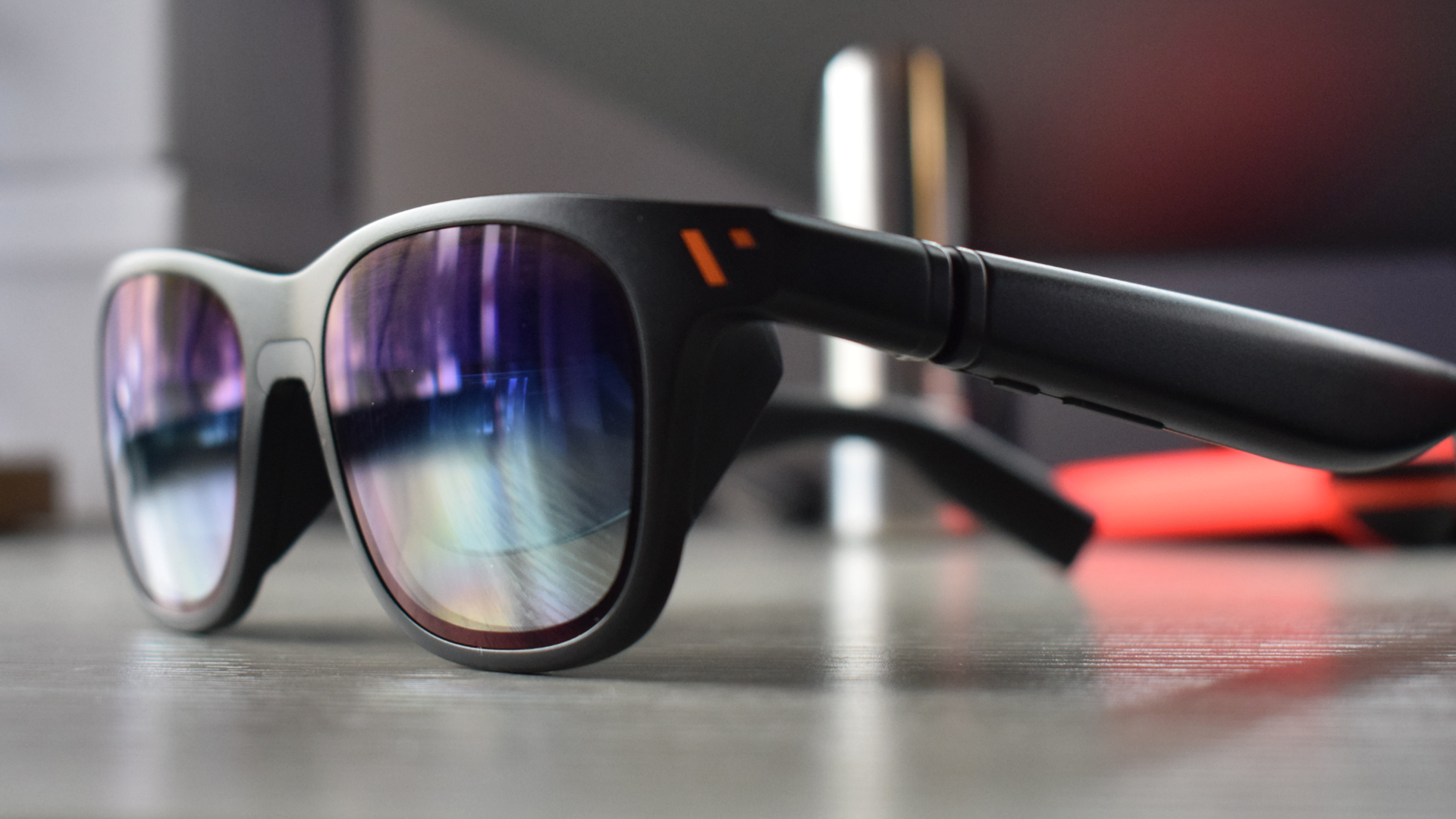
A similar increase in bulk is found across the top of the frames, which is needed to make room for each eye’s bottom-firing micro-OLED display projections – and sadly maintains the quirky “lifting off the face” look that many AR glasses suffer from. These projections land on secondary, prism-like lenses found behind the main electrochromic film lenses, which can be activated with a single press of the action button to block out up to 99.5% of external light and enhance immersion while in use.
The prism-like secondary lenses may take some getting used to at first, and while there’s a clear visual definition between the two, it can be jarring. Eventually, your eyes tune out their presence — though their surface is much more reflective than the main lenses. This can manifest some distracting mirroring in brighter environments while the glasses aren’t in use or the display is anchored to the corner of your sight.
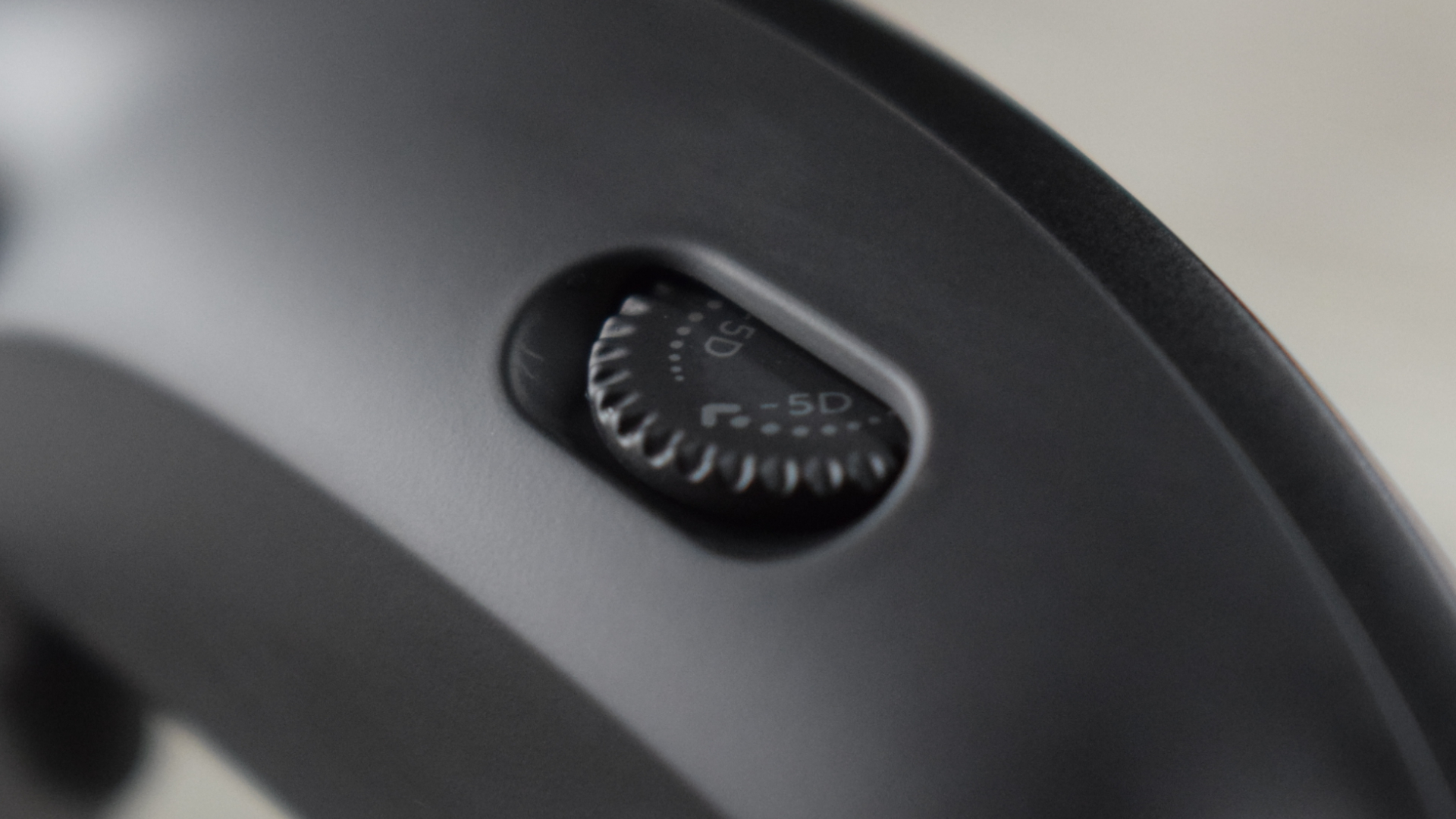
Two myopia adjustment dials, also present on the chunkier front frames, aid those with nearsightedness. These dials allow you to fine-tune the focus for each eye (0.0D to -5.0D) and ensure you’re getting the most crisp results possible from the virtual displays.
Finally, these lightweight (77 grams) frames feature a proprietary magnetic pin connection at the end of the right temple tip, which allows hassle-free connection to the glasses’ USB Type-C data cable, which connects to your device of choice.
VITURE Pro XR Glasses: Setup
If you want to use VITURE Pro XR glasses with home or handheld consoles like the PS5, Nintendo Switch, Asus ROG Ally, or Steam Deck, you’ll need to invest in the VITURE Pro Mobile Dock.
Using the glasses themselves is simple. Connecting the aforementioned USB Type-C cable to the right temple tip and any compatible device (Windows, Mac, iOS, and Android, featuring a USB-C DisplayPort/DP Alt Mode-supporting port) instantly activates screen mirroring as the glasses’ micro-OLED projectors kick in.
You don’t need to worry about drivers or software with this use case. The VITURE Pro XR smart glasses essentially act as a plug-and-play monitor. However, this will only result in a static virtual display with little to no customization available for positioning the screen or engaging in 3DoF (Three Degrees of Freedom), AR-like interactions.

If you want to use VITURE Pro XR glasses with home or handheld consoles like the PS5, Nintendo Switch, Asus ROG Ally, or Steam Deck, you’ll need to invest in the VITURE Pro Mobile Dock ($129). This accessory unlocks 3D content support and acts as a docking station (that allows two VITURE smart glasses to be connected simultaneously and HDMI connections) and a portable power bank with a 13,000 mAh battery.
VITURE Pro XR Glasses: Software
To use those more advanced visual features, you’ll need to download and install the SpaceWalker app. SpaceWalker is available for iOS/iPadOS, Android, and now Windows, giving users a spatial sandbox that includes a web browser and media player. While that doesn’t sound like much, it is enough to be able to make use of web versions of apps like YouTube, Netflix, and Prime Video.
The benefit of doing this through SpaceWalker is that VITURE’s app also allows for 3DoF tracking, allowing you to turn away from your virtual screen or more comfortably view content. SpaceWalker also allows media or web pages to be clipped to the corners of your view and scaled in size to suit your needs.
This can let you prepare and cook a meal while following along with a video tutorial that doesn’t impede your full vision, or catch up on some YouTube videos while getting around town without worrying about bowling over the locals because your entire field of vision was being taken up with “Memes for the Boys part 62.”
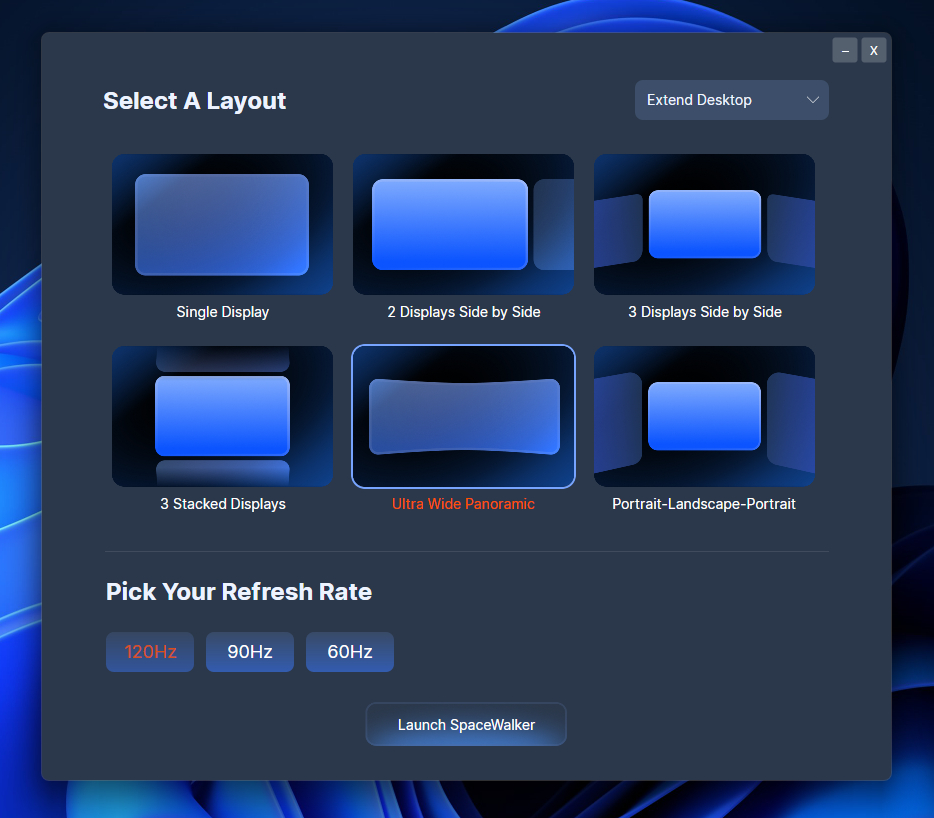
SpaceWalker for macOS is a whole other ballgame. Here, you’ll be able to engage in a much truer spatial computing experience. Connecting the VITURE smart glasses to a MacBook running SpaceWalker unlocks a multitude of virtual display options, including stunning ultrawide 21:9 floating displays and the ability to shrink and grow the scale of displays with ease.
The Windows version of SpaceWalker has only recently been released and can be a little buggy at times. However, it’s safe to expect that VITURE will bring the app up to speed in the coming months.
There’s no current rival to VITURE’s offerings on the software front, at least not from smart glasses manufacturers themselves (though there are some excellent pieces of third-party software available online). While XREAL has the most similar offering in terms of design, style, picture, and audio, VITURE is one of the only AR smart glasses companies to deliver such compelling, widely-supported, easy-to-use, and impactful software.
VITURE Pro XR Glasses: Display
AR glasses like VITURE’s use an interesting projection method to present virtual screens before your eyes. Rather than the image appearing directly on the lens, two Sony micro-OLED panels beam an image into a secondary lens that redirects each image toward your eyes.
The result is quite impressive, to say the least. With a bright, 135-inch virtual panel before you at all times. There’s a full-HD (1920 x 1080) per-eye resolution to enjoy with refresh rates of up to 120Hz — which is especially excellent for speedy, responsive gaming through the glasses.
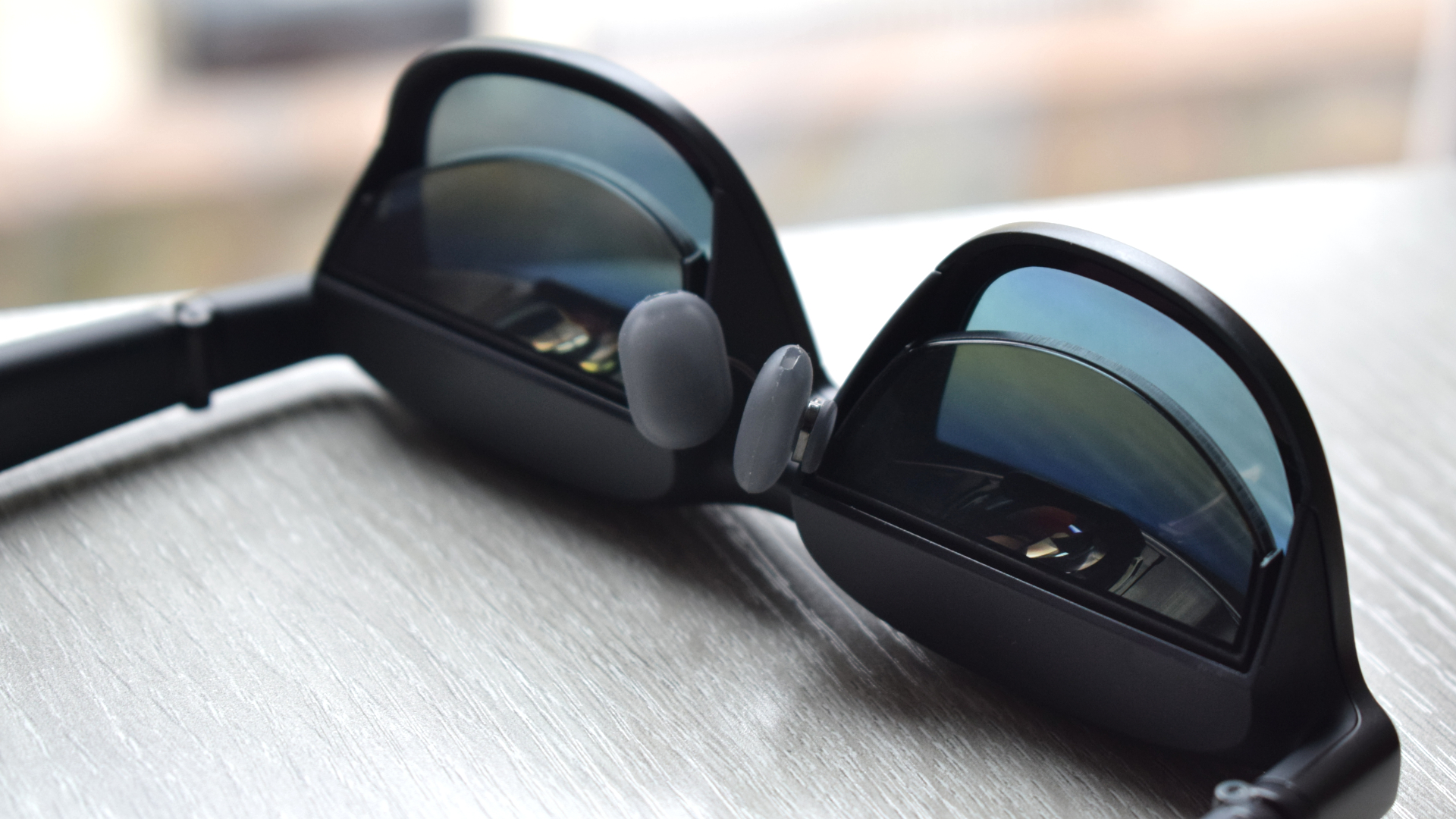
One downside to the AR glasses form factor is that your FoV (Field of View) is more restricted than when using a VR/AR headset like the Meta Quest 3. The Pro XR glasses have a narrower 46-degree FoV, resulting in a more tightly packed area from which you can view the projected image. In contrast, the Quest 3’s pancake lenses offer a much larger 110-degree FoV, offering over twice the screen space with which to enjoy content.
Pictures are bright and crisp, and whether I was watching movies or playing games, I never felt the glasses lacking in visual quality or performance. Better still, watching 3D content on the glasses is absolutely stunning and simple to perform. Simply holding down the action button on the left temple switches to SBS (Side-by-Side) vision, allowing the full 3D experience in games and media.

The VITURE Pro XR smart glasses are excellent for gaming. They deliver speedy refresh rates and capture the striking and varied colors of CD Projekt Red’s Cyberpunk 2077. The enormous virtual display pulls you further into titles, and your immersion is peaked when you enable the electrochromic lenses that block out the surrounding light almost entirely.
VITURE Pro XR Glasses: Audio
The VITURE Pro XR’s audio's open-ear design lets you enjoy media or games without shutting off the rest of the world. The Harmon-tuned audio is definitely rich in quality, and the audio bleed is very well-contained.
Setting the glasses down while playing a range of music videos and movies at peak volume, I lost track of much of the audio at only a few feet in distance. This makes them ideal for commutes or on-the-go watching, as you won’t be annoying those around you by unwantedly blaring the contents of your watchlist in their general direction.
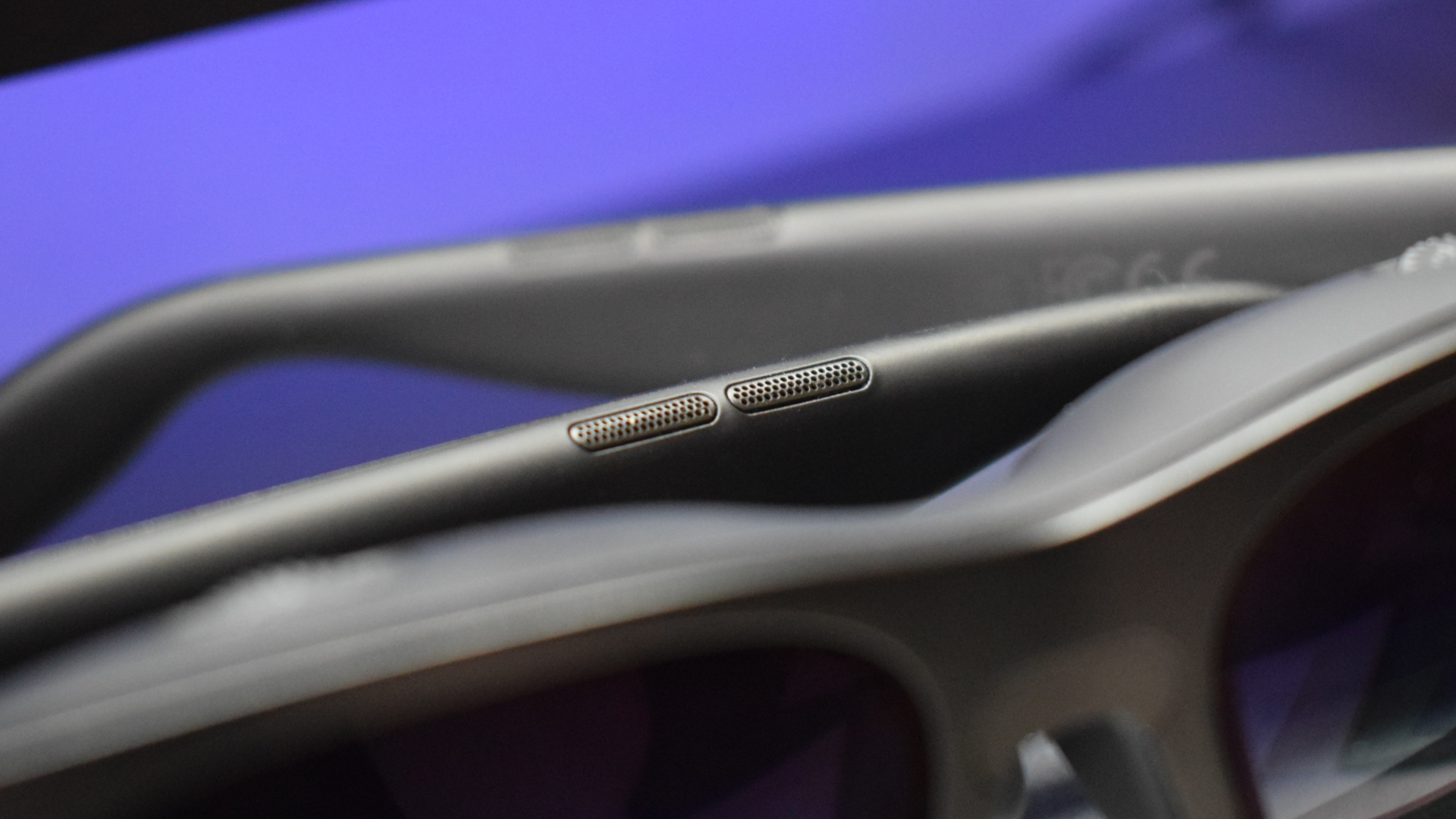
However, that’s likely because the VITURE Pro XR’s speakers are relatively quiet compared to others. The XREAL Air 2 glasses are also open-ear in design but offer much more of a kick, making them better suited for noisier or less isolated environments. This does, however, negatively impact the frames when it comes to audio bleed.
All in all, the Pro XR’s speakers strike a fair balance and are more than enjoyable while at home or in less bustling locations. For those who want to dial things up to 11, there’s always the option to switch over to a pair of Bluetooth earbuds or headphones.
VITURE Pro XR Glasses: Price and availability
The VITURE Pro XR smart glasses are available for $549, though currently discounted to $459 for early adopters.
At face value, that’s a sizeable sum for a pair of high-tech shades, though it’s not an uncommon price for smart glasses of its ilk. The $399 XREAL Air 2 AR glasses offer similar features, but options like the VITURE Pro XR’s electrochromic film lenses are reserved for the more expensive $449 Air 2 Pro model.
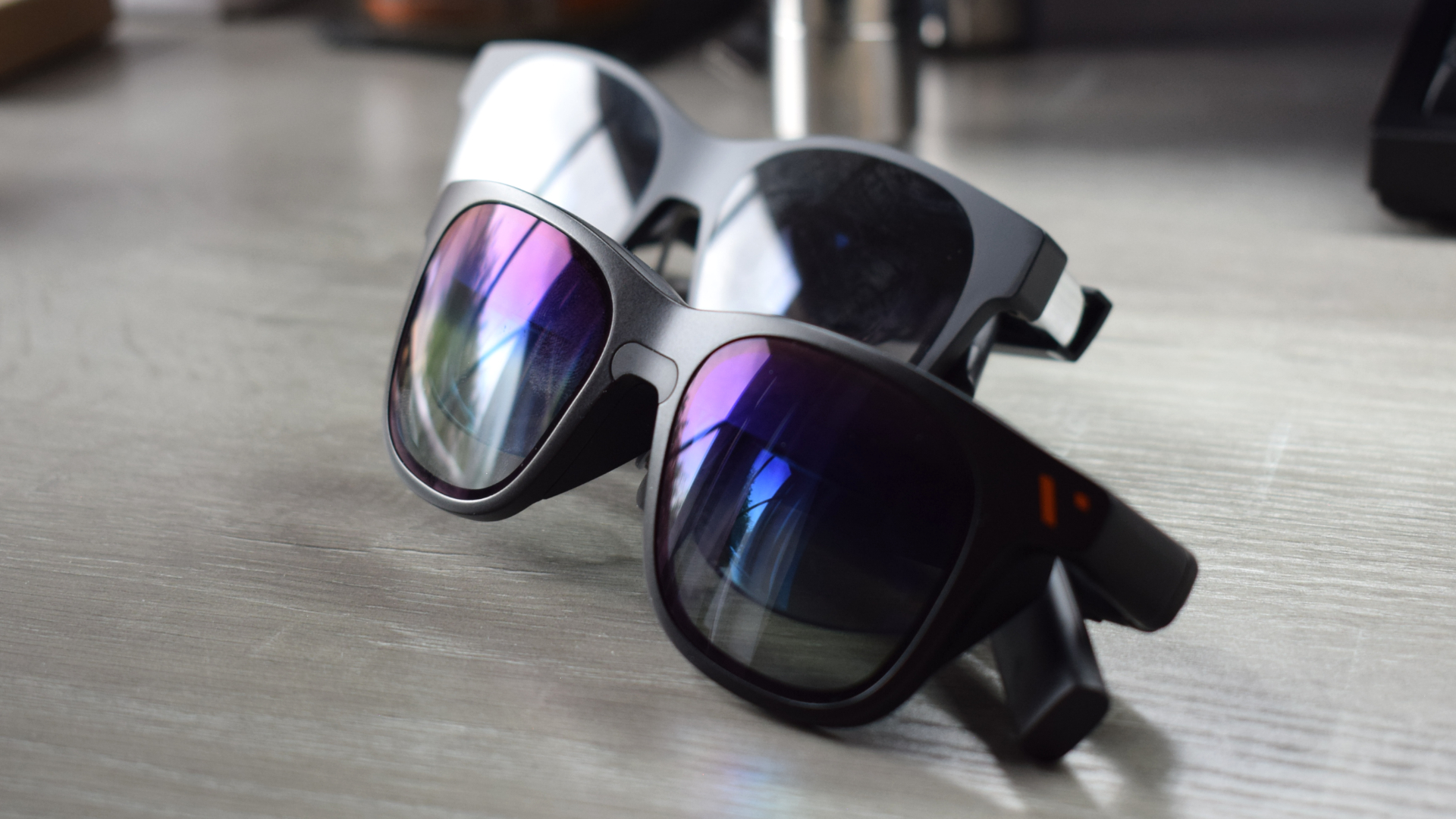
However, XREAL’s offerings lack the myopia adjustment dials of VITURE’s glasses, leaving some glasses wearers needing to rely on potentially expensive lens inserts to see the virtual displays clearly.
Of course, at that price, it’s worth considering the expanded functions and capabilities of VR/AR headsets like the $499 Meta Quest 3. That being said, the improvements to the overall AR experience from the Quest 3 will come at the cost of a bulkier, heavier, and less welcoming form factor.
Bottom line
VITURE’s AR smart glasses offering is a well-rounded assortment of accessories and software that pushes the AR/XR experience that frames like this can deliver. There’s truly no smoother or fleshed-out experience as the one offered here — at least for now.
Forget spatial computing. Pick up a pair of VITURE's Pro XR glasses and give facial computing a try instead.
My only major gripe is that the complete experience is costly. VITURE’s frames alone have an intimidating price tag to some, so having to invest even more to get the most from your handheld or home console may be asking too much of general consumers.
However, as a plug-and-play pair of AR smart glasses, the core product is still considerably impressive, thanks to the awesome SpaceWalker software available across mobile and desktop platforms.
Yes, the AR experience is a little more expansive and impressive through the lenses of a VR/AR headset. However, they're far less accommodating when it comes to comfort or wearing while out and about. As such, unless you're looking to take advantage of VR/AR gaming, forget spatial computing. Pick up a pair of VITURE's Pro XR glasses and give facial computing a try instead.
More from Laptop Mag

Rael Hornby, potentially influenced by far too many LucasArts titles at an early age, once thought he’d grow up to be a mighty pirate. However, after several interventions with close friends and family members, you’re now much more likely to see his name attached to the bylines of tech articles. While not maintaining a double life as an aspiring writer by day and indie game dev by night, you’ll find him sat in a corner somewhere muttering to himself about microtransactions or hunting down promising indie games on Twitter.

